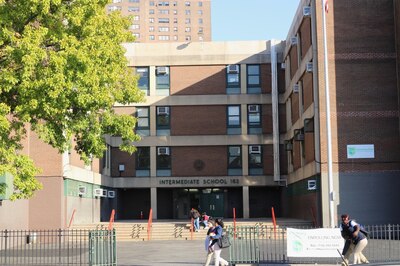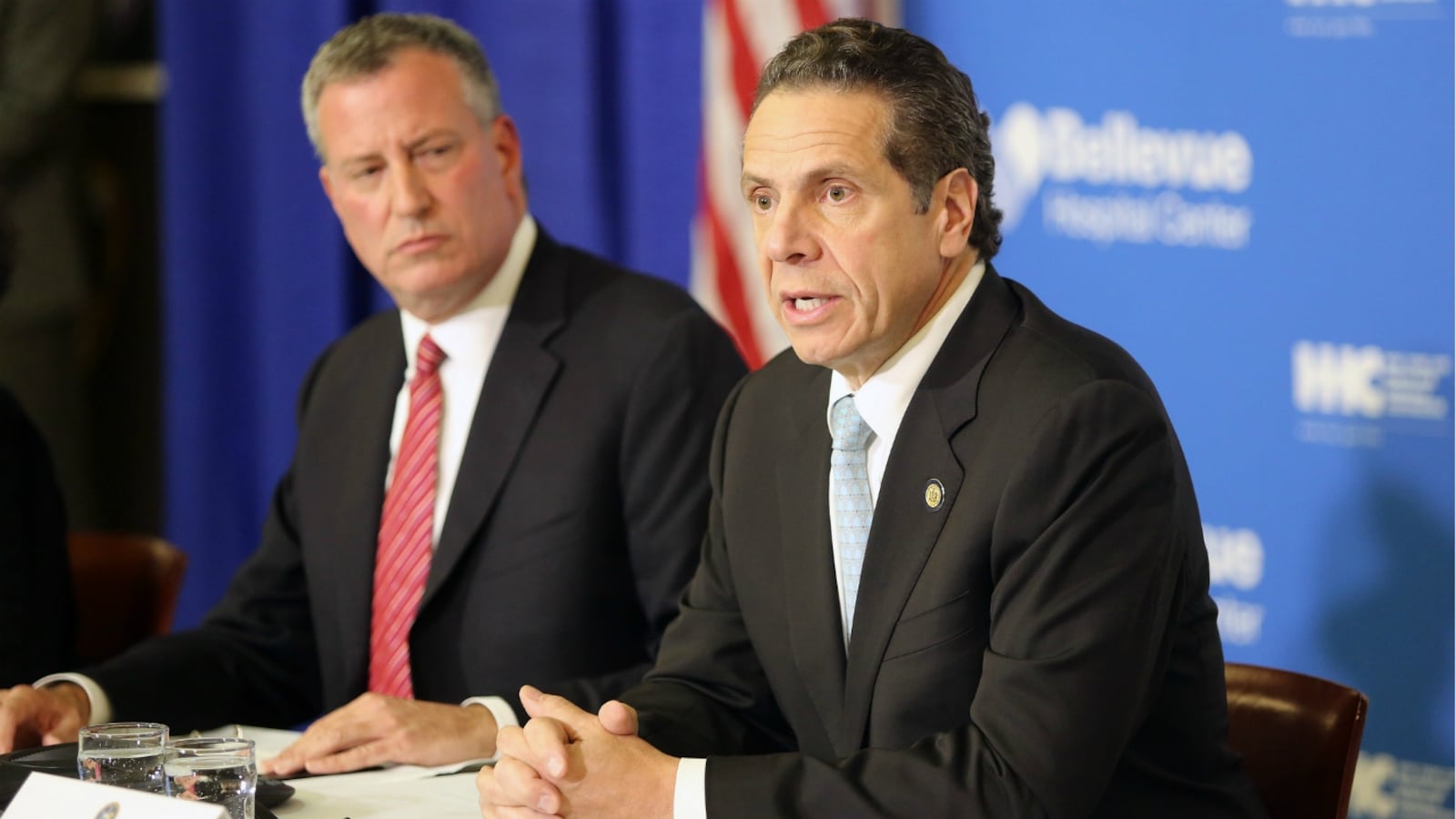When the state announced a new accountability system designed to hasten turnaround efforts in New York’s lowest-performing schools, it came with a stern warning: Make improvements or risk being taken over by outside management.
A year after that policy took effect, just one school — J.H.S. 162 in the Bronx — has been threatened with a takeover.
The State Education Department celebrated that announcement as a success: Only one school failed to meet its targets, evidence that the program is encouraging most schools to make progress.
But Governor Andrew Cuomo, who pushed for the law, isn’t happy with how it’s been implemented. His office agrees with the state that receivership is working, but says the State Education Department has let too many schools leave the program, significantly weakening its impact.
Some experts and observers argue this is intentional: The State Education Department and Board of Regents are moving away from aggressive accountability measures and are purposely watering down the program.
“It’s probably ongoing evidence of a political struggle over control of the city’s schools,” said Aaron Pallas, a professor at Teachers College. “The state doesn’t want to be in the business of reaching too far in.”
***
The logic of Cuomo’s receivership program, modeled after a Massachusetts law, was that schools like J.H.S. 162 needed stricter incentives to improve. In contrast with the city’s union-friendly “Renewal” turnaround program, which costs hundreds of millions of dollars and infuses schools with social services, the receivership program expects schools to make progress in just a year or two. It offers some extra funding and gives districts wider latitude to restructure schools while circumventing union rules, but threatened them with outside management if they didn’t meet their targets.
Unsurprisingly, when the receivership program was floated in 2015, Mayor Bill de Blasio blasted the idea. “The notion of a group of bureaucrats 150 miles away trying to determine the fate of our children sounds like a formula for disaster,” he said.
Under the law that passed later that year, Chancellor Carmen Fariña was granted extra authority — the ability to ask teachers to reapply for their jobs, for instance — over city schools the state flagged as its lowest performers. Sixty-two city schools were identified, meaning they were ranked in the lowest five percent statewide, and seven of them had been in the lowest five percent since 2006.
Those seven “persistently struggling” schools, including J.H.S. 162, were given a year to show improvements on everything from test scores to school climate, or else face the specter of independent management.
But almost as soon as the program got underway, it was clear that state education officials wanted to ensure it wouldn’t be too hard to meet mandated improvement goals, which were selected in consultation with the schools themselves.
“These schools had such a long history of low performance,” said Ira Schwartz, assistant commissioner for accountability at the State Education Department, who added that it didn’t make sense to set unreachable targets. “We’re looking really for green shoots at this point.”
Cuomo’s office agrees that it makes sense to set modest goals, but is critical of the state’s decision to release so many schools from the program. The State Education Department has reduced the number of schools in the program over the last year — just 27 remain in New York City, down from 62 when the program launched.
“It’s clear the new law is working – improving our academic institutions so New York’s best and brightest have a fair shot at success,” Cuomo spokeswoman Abbey Fashouer wrote in an email. “This makes it all the more perplexing that SED took action to remove a number of schools from this successful program. There is still a long road ahead, and all parties must be held to account.”
The education department pushed back against the implication that schools leaving the program would not receive state support. “We all know that fragile schools, even those moving in a positive direction, continue to require critical funding and appropriate monitoring so they can continue the important work of supporting students,” SED spokeswoman Emily DeSantis wrote in a statement. (The state is currently involved in litigation over whether some schools that were released should still be eligible for extra receivership funding.)
Asked why more than half of New York City’s receivership schools were dropped from the program since its inception, state officials said they reevaluated each school’s status in February based on 2014-15 data, instead of the 2013-14 data initially used to determine their eligibility. Officials confirmed no new schools have been added to the program, but said more could be added in the future.
***
That isn’t much solace for J.H.S. 162, the only school in the state that failed to meet its targets this year, and is now subject to takeover or possible closure.
On paper, at least, it isn’t surprising that the school was initially identified for the receivership program. J.H.S. 162, also known as Lola Rodriguez De Tio, has been among the lowest achieving in the state since 2006, and is part of the city’s Renewal program. It has posted single-digit reading and math proficiency rates, and was only recently taken off the state’s list of “persistently dangerous” schools. Nearly 47 percent of the school’s teachers have left over the past three years, according to data provided by union officials.

But critics say the fact that only one school was ultimately singled out for takeover shows that the program is hardly the sweeping accountability tool Cuomo originally envisioned.
“To single out one school and say it’s the worst school in the state is misleading on so many levels,” said Eric Nadelstern, a former New York City deputy schools chancellor who is now a professor at Teachers College and visited J.H.S. 162 several years ago. “It’s easy for the school to say there are many other schools in the city and state that match the same criteria.”
Asked about criticisms that the current law arbitrarily singled out one of many low-performing schools for outside management, SED’s Schwartz said, “It was the opposite of arbitrary. There was a very precise algorithm that was shared with everybody. No one is saying there is only one troubled school in New York.”
Schwartz denied that the education department is backing away from the receivership program. In fact, he said, it could serve as a model for broader accountability framework the state is designing under the federal Every Student Succeeds Act.
“If anything, this is a generation ahead of ESSA,” Schwartz said, noting that state policymakers will likely borrow from the receivership program’s emphasis on measures other than test scores to evaluate schools. “This is a pilot in a sense. If it is a successful, we will advocate for its wider adoption.”
Some school leaders see that as an encouraging sign. Though there was some anxiety about the prospect of a takeover, the process of coming up with tangible targets under the receivership program “clarified the work that we had to do,” said Edgar Lin, principal of J.H.S 22 Jordan L. Mott, a Bronx receivership school that was also given one year to show progress. The school hit all of its targets this year, avoiding a takeover, but will have to show gains again next year.
“When we all feel personal responsibility for things, behavior changes,” he added. “We were much more creative and adaptive.”
But uncertainty lingers at J.H.S 162, which could be closed or merged if the city decides to avoid an outside takeover.
The school’s principal, Deborah Sanabria, declined to be interviewed for this story. But on a recent afternoon, a handful of teachers and parents who gathered for dismissal said they hoped the administration would push to keep the school open.
“We are fighting, the school is fighting,” said one teacher who declined to give her name because she said teachers were cautioned against speaking to the press. “They need to give the school more time. They’re working as hard here as any other school I’ve been in.”

